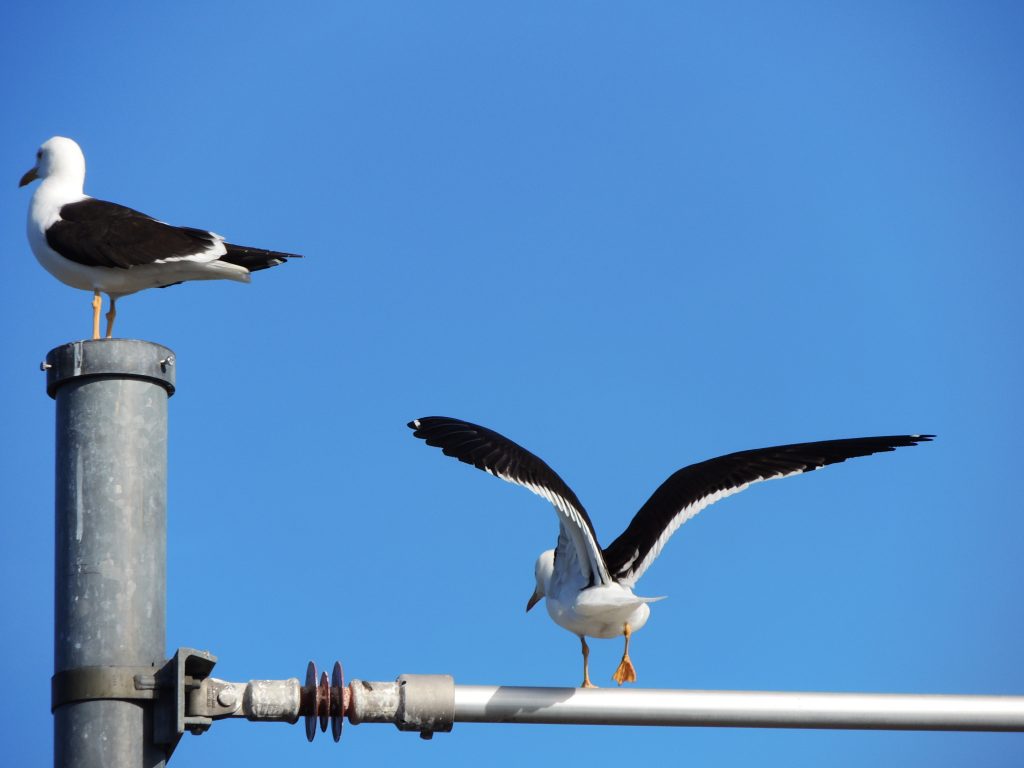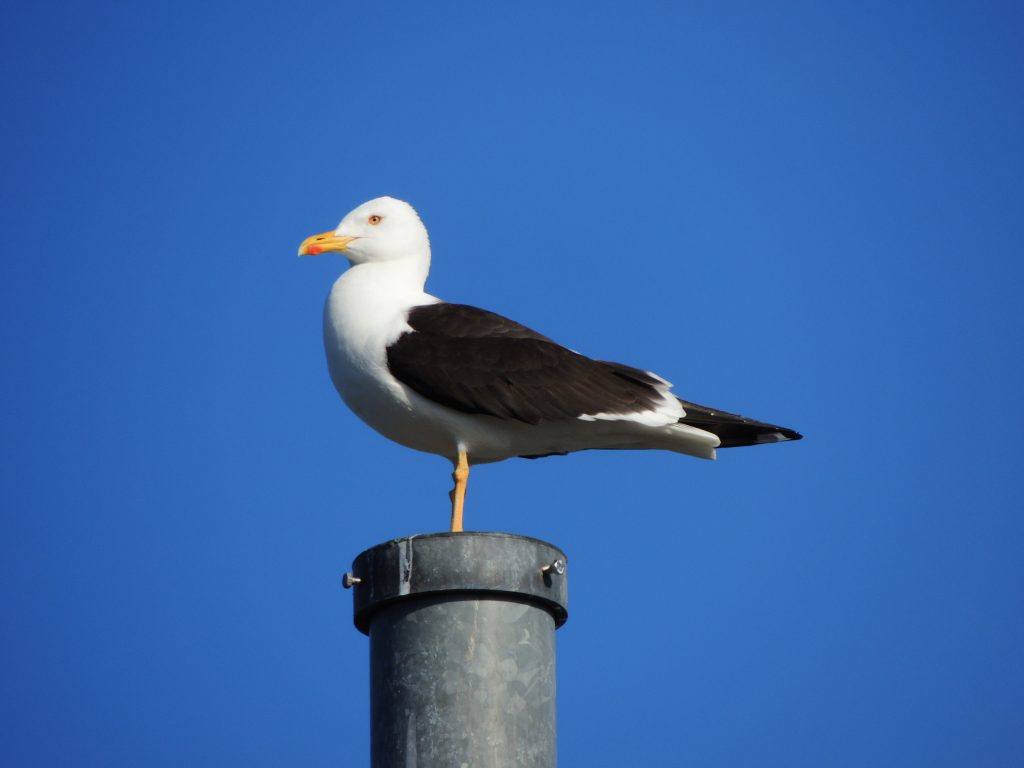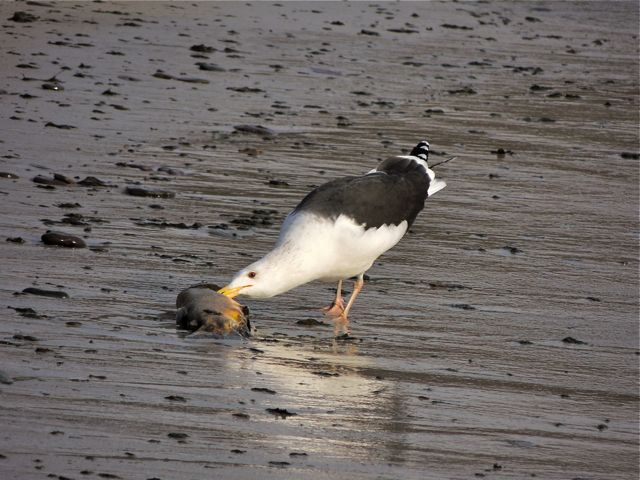November 24 2018 Cootes Paradise, Hamilton, ON. I committed myself (and a couple of friends) to do a count of birds in a large lakeside area today. I knew when I signed on that the weather could be a challenge, meaning probably cold, maybe wet and possibly snowy. I had reasoned that making the commitment would compel me to get out of the house when otherwise I might prefer to hunker down.
I was right about the weather, it was a little on the grim side: Three little Celsius degrees and a steady, collar-soaking rain, but fortunately no wind. We spent three hours and walked seven kilometres kicking through fallen leaves much of the way. Our route took us through broadleaf woodland, along the shore of a shallow lake and across some open fields.
It was pretty decent birding much of the time. The lake had a thin skim of wet ice and from our first, looking-down-from-on-high, vantage point every duck and gull had a mirrored double making counting tricky. But we made our way down to an altogether better viewing spot and came up with an astonishing count of 360 Mallards. There were Herring Gulls and Ring-billed Gulls scattered around and one conspicuous Lesser Black-backed Gull. At day’s end I think it was the Bird of the Day although a singing Winter Wren and a Pileated Woodpecker might just as easily have taken the title for any spurious reason.

The two Black-backed Gull species, Lesser Black-backed Gull and Great Black-backed Gull are both handsome birds. The Lesser is a comment-worthy bird of the winter months and quite uncommon in our area, particularly away from Lake Ontario. The global distribution of the Lesser Black-backed Gull as a species is centred on the north-western reaches of the Old World and most breed around Scandinavian shores (including Iceland) and northern Russia. Another name for it is Baltic Gull (actually one of its sub-species) and on a trip to Sweden in 2014 I noted that they were almost the default gull. One of the problems (we have) with widely distributed birds, like gulls, is their propensity to fall into sub-species, many of which are indistinguishable to all but fanatic birders.

The Great Black-backed Gull is quite a different creature. It is the world’s largest gull. Majestic yes, but tends to be brutish in its sociology. Around here it’s a common winter resident and inclined to linger well into spring. One of the notable features of a Great Black-backed Gull is its head profile, low and sort of brainless looking.; brutishness beats brains. An earlier post of mine (click here) dwelt at some length on their scavenging-killer habits.

I mentioned above that we saw and heard one Winter Wren and glimpsed a Pileated Woodpecker. There was more, we did well on woodpeckers: Pileated, Downy, Red-bellied and Hairy Woodpeckers and a couple of Northern Flickers. Among sparrows, ones, twos and threes of Song Sparrows, American Tree Sparrows, White-throated Sparrows, and Dark-eyed Juncos. A Ruby-crowned Kinglet, two, perhaps three, Brown Creepers and a Purple Finch, all good birds (as if there are bad ones?) And then bits and bobs of generally to-be-expected species, all for a total of thirty-two species, pretty good for a wet and rather unpromising day.